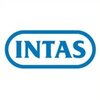Filter interviews by
Medanta the Medicity Staff Nurse Interview Questions and Answers
Medanta the Medicity Staff Nurse Interview Experiences
15 interviews found
- Q1. What is Allen test
- Q2. What is Mrs scale
I appeared for an interview in Mar 2025, where I was asked the following questions.
- Q1. Normal range of electrolyte
- Ans.
Sodium 135-145meq/l Potassium 3.5-4.5meq/l Magnesium 1.5-2.5meq/l Calcium 9-10.5mg/dl Phosphate 2.5-4.5mg/dl Glucose 70-199mg/dl Chloride 95-105meq/l Albumin 3.5-4.5g/l
- Q2. Insulin type and site
- Ans.
Insulin 5type Rapid acting Short acting Intermediate acting Long acting Ultra long acting Site _abdomen thighs upper arm and buttocks
- Q3. Pre operative patient
- Q4. How take blood sample
- Ans.
To take a blood sample -a health care professional typically uses venipuncture inserting a needle in to a vein usually in the arm to draw blood in to vial or syring .
- Q5. Hand washing step
What is PPH
Types of PPH
Singh and symptoms of PPH
Complications of PPH
Management of PPH
Multiple choice questions
Interview Preparation Tips
I appeared for an interview in Jul 2024.
You asked any type questions regarding icu and gynaecology
(2 Questions)
- Q1. How many stage of labour
- Q2. What is puperium
I appeared for an interview in Jul 2023.

(4 Questions)
- Q1. What is the fullform of BLS?
- Q2. What is CPR(cardio pulmonary resuscitation)?
- Q3. Normal values of vital signs?
- Q4. What is hyperglycemia?
I applied via AmbitionBox and was interviewed in Oct 2023. There were 3 interview rounds.

Any disease conditions nursing assignment making about disease name and explain about disease conditions
In this process discuss about any procedure of patient. and use good communication skills .in this process experience knowledge Increase to every group member. in this process discuss method improvement in good IPR . interpersonal relationships.good learning and good mantiance skills improve in behaviour method.
Interview Preparation Tips
I applied via Naukri.com and was interviewed in Aug 2023. There were 3 interview rounds.

General Questions related to Nursing
(2 Questions)
- Q1. Glasco Coma Scale
- Q2. Vital signs, Glasco coma scale, self introduction
Interview Preparation Tips
I applied via Naukri.com and was interviewed in Aug 2023. There were 4 interview rounds.

Meningitis is usually caused by a viral infection but can also be bacterial or fungal. Vaccines can prevent some forms of meningitis.
An infection of the air-filled space behind the eardrum (the middle ear).
An aptitude test is an exam used to determine an individual's skill or propensity to succeed in a given activity.
Interview Preparation Tips
I applied via Campus Placement and was interviewed in Jul 2023. There were 3 interview rounds.

(1 Question)
- Q1. Introduction Dietary pattern for diabetic patients Normal vital signs Management of Hypertension Management of Dm Diabetic foot Pressure ulcers and it's management Normal sugar values Normal electrolyte...
(1 Question)
- Q1. Technical questions of nursing procedures and asked
Interview Preparation Tips

(2 Questions)
- Q1. Ask the qualifications, organization, registration
- Q2. Current salary, Designation
Related work questions,nabh, questions,self introduction
Interview Preparation Tips
Top trending discussions






Medanta the Medicity Interview FAQs
The duration of Medanta the Medicity Staff Nurse interview process can vary, but typically it takes about less than 2 weeks to complete.
Tell us how to improve this page.
Medanta the Medicity Interviews By Designations
- Medanta the Medicity Staff Nurse Interview Questions
- Medanta the Medicity Clinical Pharmacist Interview Questions
- Medanta the Medicity Pharmacist Interview Questions
- Medanta the Medicity Operations Executive Interview Questions
- Medanta the Medicity Nursing Staff Interview Questions
- Medanta the Medicity Nurse Interview Questions
- Medanta the Medicity Executive Assistant Interview Questions
- Medanta the Medicity Nursing Officer Interview Questions
- Show more
Interview Questions for Popular Designations
Overall Interview Experience Rating
based on 25 interview experiences
Difficulty level
Duration
Interview Questions from Similar Companies
Medanta the Medicity Staff Nurse Reviews and Ratings
based on 264 reviews
Rating in categories
|
Staff Nurse
597
salaries
| ₹1.5 L/yr - ₹6 L/yr |
|
Assistant Manager
158
salaries
| ₹4.8 L/yr - ₹10.6 L/yr |
|
Executive
120
salaries
| ₹2.2 L/yr - ₹5.4 L/yr |
|
Nursing Staff
108
salaries
| ₹1.8 L/yr - ₹4.8 L/yr |
|
Pharmacist
107
salaries
| ₹2.2 L/yr - ₹5.5 L/yr |

Lupin

Zydus Lifesciences

Hindustan Unilever

Standard Chartered
- Home >
- Interviews >
- Medanta the Medicity Interview Questions












